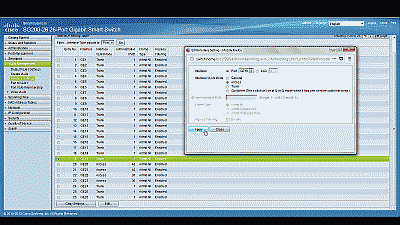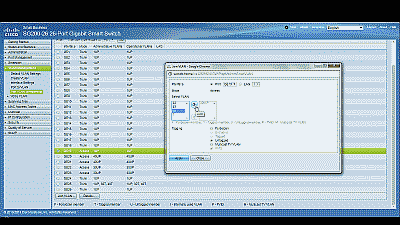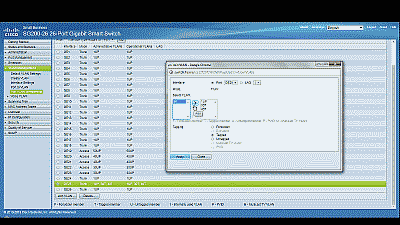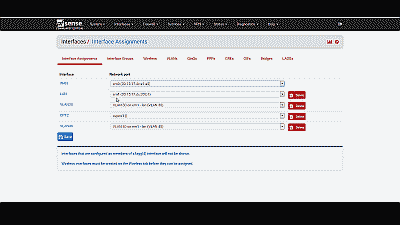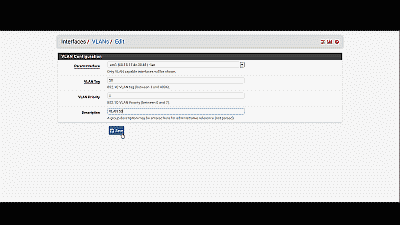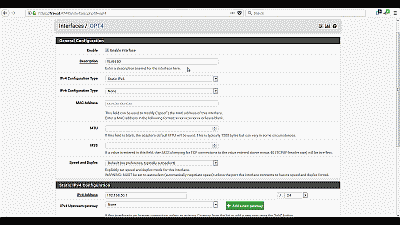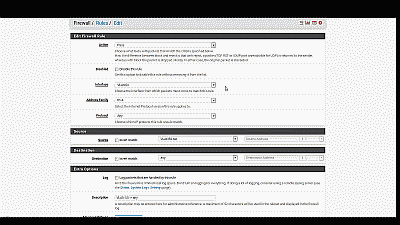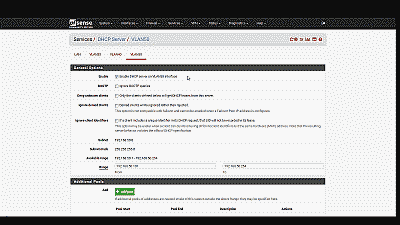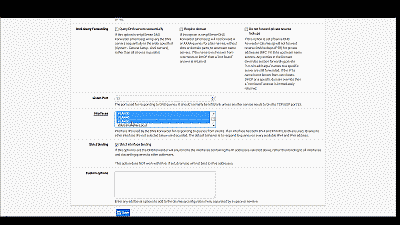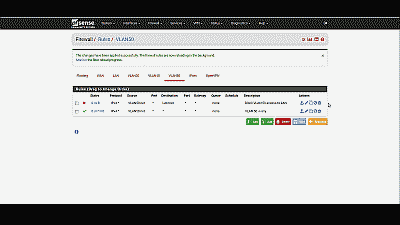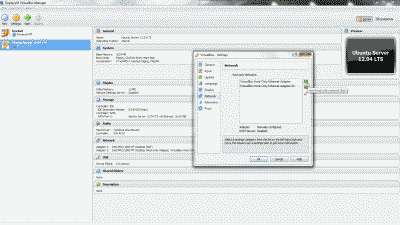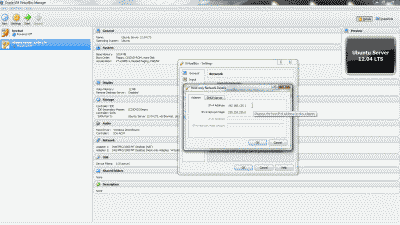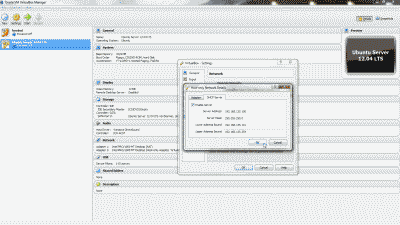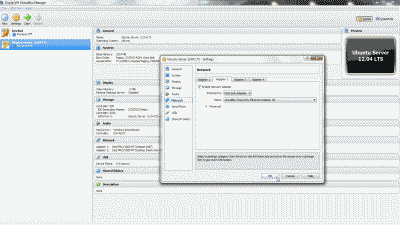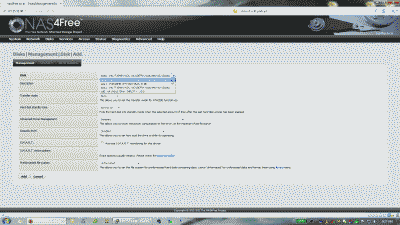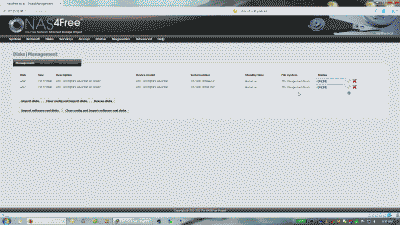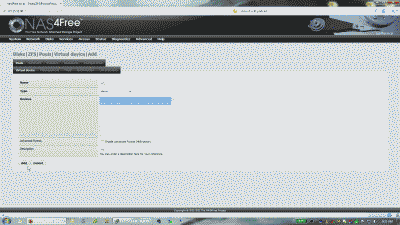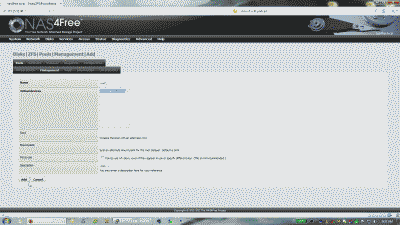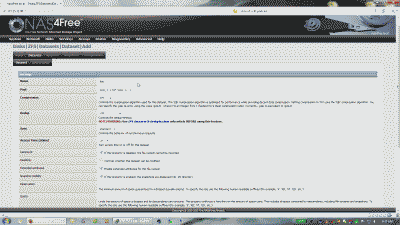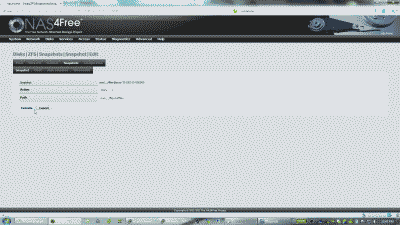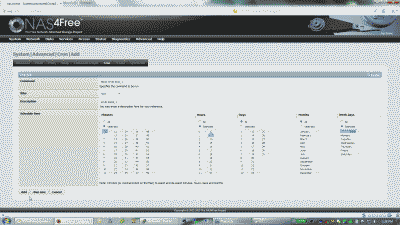(20171231 — The steps in this post were amended to address changes in recent versions of software. Minor editorial corrections were also made — iceflatline)
pfSense is a customized version of FreeBSD tailored specifically for use as a perimeter firewall and router, managed entirely from a web browser or command line interface. pfSense includes a long list of other features, as well as a package system allowing its capabilities to be expanded even further. pfSense is free, open source software distributed under the BSD license.
A VLAN (“Virtual Local Area Network”) is a logical grouping of network hosts (and other resources) connected to administratively defined ports on a switch. This enables hosts to communicate as if the attached to the same physical medium, when in fact they may actually be located on different LAN segments. A VLAN is treated like its own subnet or broadcast domain, which means that Ethernet frames broadcast onto the network are only switched between the ports logically grouped within the same VLAN.
In this post I will describe how to create and configure a VLAN in pfSense. Once configured, you’ll be able to route (or prevent routing) traffic between this VLAN and other VLANs, and each VLAN will be able to share the same Internet connection. To help explain the steps involved, we’ll create a static VLAN on a 24-port switch and trunk that VLAN from the switch to the LAN interface on pfSense, where we will assign the VLAN a unique /24 private IP subnet.
All steps involved assume that: 1) pfSense is installed correctly and providing basic Internet connectivity to an existing LAN interface; 2) the NIC (“Network Interface Controller”) assigned to the LAN interface supports IEEE 802.1Q VLAN tagging; and, 3) the switch connected to the LAN interface is capable of supporting the creation, configuration and trunking of port-based VLANs.
The software versions used in this post were as follows:
- 2.4.2-RELEASE-p1 (amd64)
The switch used in this post was a Cisco model SG200-26; a so-called “smart switch,” featuring, among other things, Gigabit Ethernet, a web-based management interface, and simultaneous support for up to 256 port-based and IEEE 802.1Q tag-based VLANs.
Each switch, and its associated management interface is different; therefore, you’ll need to make the appropriate adjustments when following the instructions in this post in order to successfully configure your particular switch.
Let’s get started…
Configuring the Switch
As you may recall, static VLANs, often referred to as “port-based” VLANs, are created by assigning switch ports to a preconfigured VLAN identifier. In this example, we’ll configure a static VLAN on our switch and assign it VLAN ID 50. Note that you can use any positive integer between 2 and 4094 you’d like for your VLAN ID, however, VLAN IDs 1 and 4095 should be avoided because, as a general rule, most switches by default assign all ports to VLAN ID 1, the “administrative” VLAN ID, and VLAN ID 4095 as the “discard” VLAN.
Begin by navigating to VLAN Management->Create VLAN and select “Add.” Enter a value of 50 in the “VLAN ID” field and enter a name to denote this particular VLAN in the “VLAN Name” field. In this example, we’ve used the name “vlan50.” When complete, select “Apply”. (See Figure 1)
Before assigning membership of a particular port to our new VLAN, we must first configure that port to be either an “Access” port or a “Trunk” port. Access ports are ports that are members of only one VLAN. This type of port is normally used for attaching end devices which are generally unaware of a VLAN membership, either because their NIC is incapable of tagging Ethernet frames a VLAN ID, or they are not configured to do so. Switch ports configured as Access ports remove any VLAN information from the Ethernet frame before it is sent to the device. Trunk ports on the other hand can carry multiple VLAN traffic, and are normally used to connect switches to other switches or to routers. It is very often the case that small-business grade switches, such as the Cisco SG200, designate each port as a Trunk port by default.
To keep our example simple, we’ll assume that the device(s) connected to the switch are not configured, or are unable to be configured, to tag Ethernet frames with a VLAN ID. Consequently, in this example, we’ll configure port 19 as an Access port, and assign it membership in our newly created VLAN. Furthermore, we’ll also assume that port 25 is currently being used to connect the switch to the pfSense LAN interface, and configure it as a Trunk port, assigning it membership in our newly created VLAN.
Navigate to VLAN Management->Interference Settings, select port 19 and then select “Edit”. Change the Interface VLAN Mode from Trunk to Access, then select “Apply” (See Figure 2). Now follow similar steps to configure port 2 as an Access port.
Next, navigate to VLAN Management->Port VLAN Membership, select port 19 and then select “Join VLAN”. Since Access ports can be added as untagged to only a single VLAN, we’ll need to first remove the default VLAN the switch automatically assigns to each port (usually VLAN 1). Highlight VLAN 1 by left-clicking on it, then select the arrow icon to remove it from the interface. Now highlight VLAN 50 by left-clicking on it, then select the arrow icon to add it to the interface, ensuring that “Untagged” is selected from among the options under “Tagging”. Select “Apply” when completed (See Figure 3).
With switch port 19 configured as an Access port and joined to VLAN 50 any Ethernet frames that enter that port will be tagged with the appropriate VLAN ID. Now let’s configure the port 25, the port that is connected to the LAN NIC in pfSense. This port will be configured as a Trunk port and joined to VLAN 50 so that, in addition to passing the Ethernet frames from from devices attached to the other ports on the switch to pfSense, it will also pass Ethernet frames tagged with VLAN ID 50 entering switch port 19.
Ensure that port 25 is configure as a Trunk port, then navigate to VLAN Management->Port VLAN Membership, select port 25 and then select “Join VLAN”. Highlight VLAN 50 by left-clicking on it, then select the arrow icon to add it to the interface, ensuring that “Tagged” is selected from among the options under “Tagging”. Select “Apply” when completed (See Figure 4).
That’s it for configuring the switch. If your switch supports both a running configuration and a startup configuration, make sure to save the changes you’ve made to the startup configuration so that they are not lost should the switch reboot for any reason.
Configuring pfSense
Now we need to create and configure VLAN 50 in pfSense. Navigate to Interfaces->Assignments and make note of the device driver name assigned to the LAN NIC. For this example we’ll assume the device driver name is “em1” (See Figure 5). The LAN interface will serve as the “parent interface” for the VLAN interfaces we will create in the next step.
Next, navigate to Inerfaces->Assignments->VLANs and select the “+ Add” icon. In the subsequent screen, select “em1”, the LAN NIC interface, from among the options in the drop down list under “Parent interface”, and enter the value of 50 under “VLAN tag”. Add an optional description for this VLAN under “Description”, then select “Save” (See Figure 6).
After creating the VLAN interface, return to Interfaces->Assignments and select the “+ Add” icon to add the “VLAN 50 on em1-lan (VLAN 50)”, then select “Save” (See Figure 7). At this point you’ll notice that under the “Interface” column pfSense has likely denoted VLAN 50 as an optional or “OPT” interface. Don’t worry, we’ll address that next.
For this example we’ll assume that pfSense has assigned VLAN 50 as OPT4. Navigate to Interfaces->OPT4 and select “Enable Interface”. Under “Description” replace “OPT4” with “VLAN 50”, then select “Static IPv4” from among the options in the drop down list under “IPv4 Configuration Type”. We’ll use network 192.168.50.0/24 for VLAN 50 by assigning the static IP address 192.168.50.1 on this interface, and selecting the network mask of “24” under the “Static IP Configuration” section. The other parameters can remain at their default values. Select “Save” and “Apply changes” when complete (See Figure 8). Now if you navigating back to Interfaces->Assigments you will see VLAN 50 listed and labeled with the description you added when enabling the interface in the previous steps.
Next, we need to build a firewall rule for our two new VLANs so that traffic can pass to / from the WAN interface, and by extension, to the Internet. Navigate to Firewall->Rules and select the VLAN 50. Select the “Add” icon (there are currently no rules so either Add icon will work) to create a new rule. For our example, we’ll build a simple outbound pass rule for any protocol in VLAN 50, similar to the way a typical LAN outbound pass rule would be configured. Select “any” from among the options in the drop down list Under “Protocol”, and under “Source” select “VLAN50 net” from among the options in the drop list. If desired, you may enter a description of this newly created rule for your reference under “Extra Options”. The other parameters can remain at their default values. Select “Save” and “Apply changes” when complete (See Figure 9).
Unless you plan to assign static IP addresses to host devices, you’ll want to configure a DHCP server for the new VLAN 50. Navigate to Services->DHCP server and select VLAN 50. Select “Enable DHCP server on VLAN50 interface”, then enter the range of IP addresses within the network 192.168.50.0/24 you’d like the DHCP server to use under “Range”. Finally, pfSense will use the IP address assigned to this interface as the gateway address by default. For our example this address will be 192.168.50.1. If your requirements call for something different, enter an IP address for the network gateway under “Gateway”. The other parameters can remain at their default values. Select “Save” when complete (See Figure 10).
You’ll also want to navigate to Services->DNS Forwarder->Interfaces and ensure that interfaces used by the DNS Forwarder for responding to queries from clients includes VLAN50, then select “Save” and “Apply changes” when complete (See Figure 11).
Wrapping up
At this point the LAN switch and pfSense should be configured to support VLAN 50. To test, connect a host device such as a desktop or laptop computer to port 19 on the switch. If you’ve configured everything as described, you should receive an IP address within the DHCP address range you’ve specified for VLAN 50 network 192.168.50.0/24. The default gateway, DHCP server and DNS server addresses should be 192.168.50.1. You should also have Internet connectivity.
Be aware that as currently configured, each VLAN is routed to all other VLANs. If you would like to disallow some or all traffic to/from a particular VLAN you must create firewall rules explicitly stating what traffic should not be routed. Keep in mind that pfSense evaluates firewall rules on a first-match basis (i.e. the action of the first rule to match a packet will be executed). So, for example, if you wanted to block all VLAN 50 traffic from reaching the LAN you might create a rule to that effect before the one we created previously to route all VLAN 50 traffic to any destination (See Figure 12).
Conclusion
VLAN support in pfSense is not hard to configure nor complicated to manage, assuming your switch and NICs support this capability. To help explain the steps involved, we created a static VLAN on a commodity 24-port small-business switch and trunked that VLAN to the LAN interface on pfSense. We then created and added the VLAN interface, created the requisite firewall rules, and assigned the VLAN a unique /24 private IP subnet with host addressing handled using DHCP. The VLAN is able to share the pfSense’s Internet connection and we are able further configure pfSense to prevent routing traffic between each VLAN, if desired.

